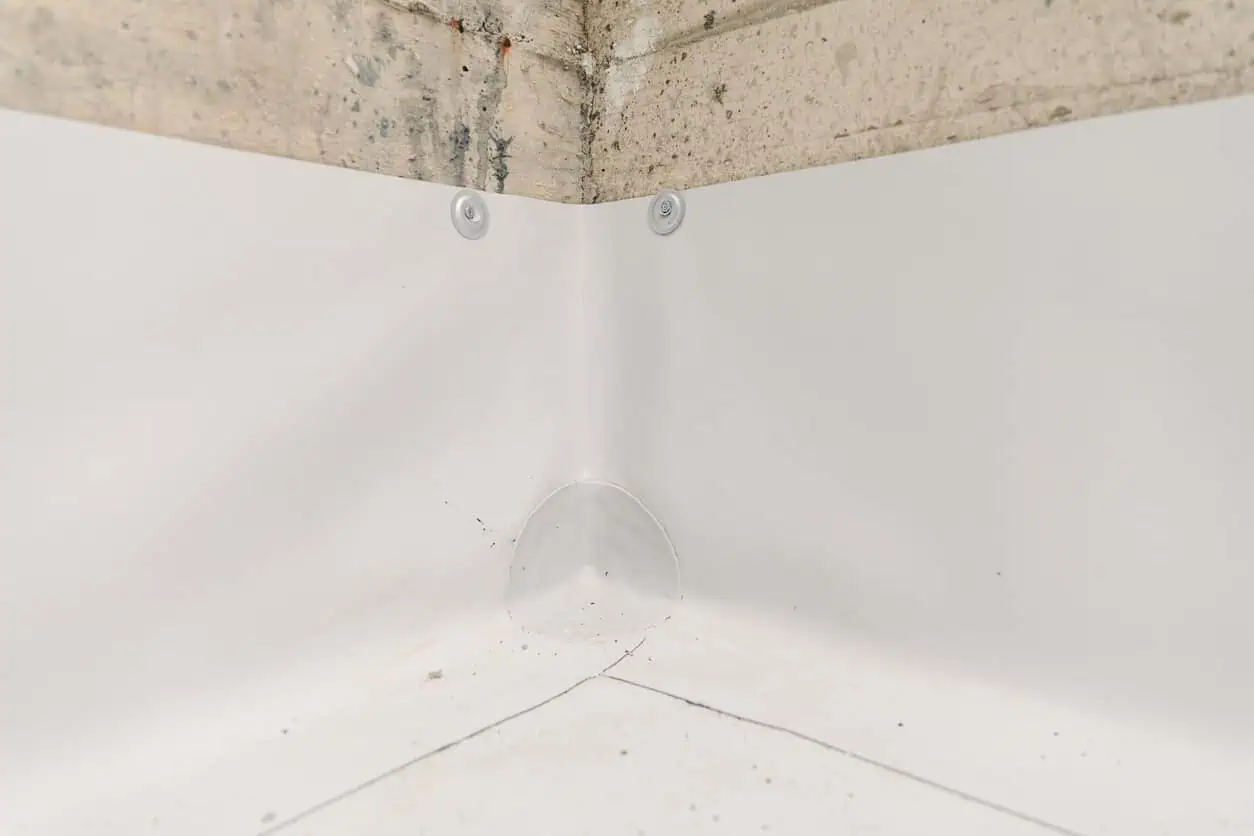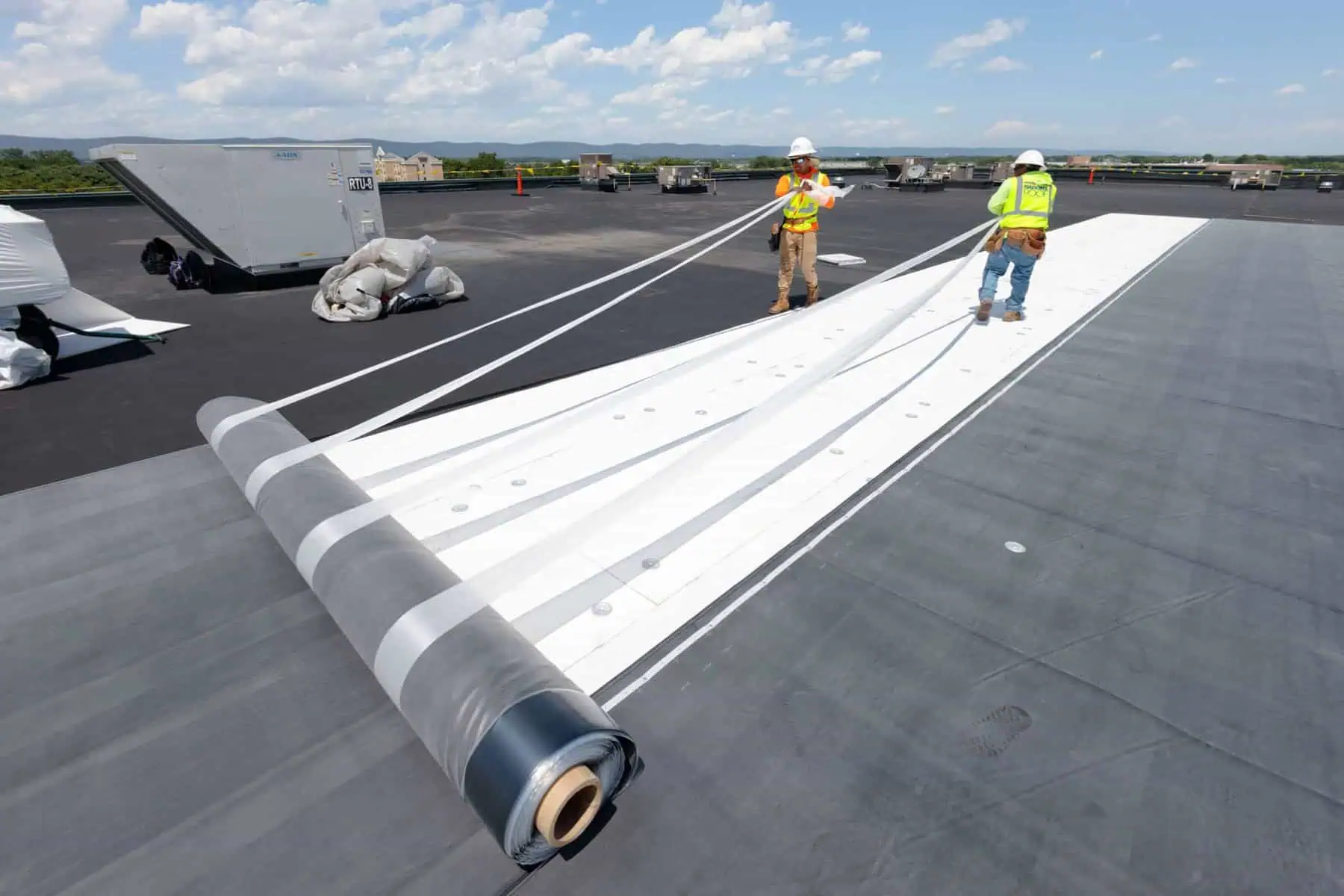You’ve come to the right place if you are interested in learning more about your single-ply membrane roof. There are three main types of single-ply membranes, which are installed by applying a single layer of material over the insulation layer or roof deck – PVC, TPO, and EPDM.
Here’s what you need to know about single-ply roofing material.
Single Ply Roofing Systems Are Popular in North America
EPDM rubber roofs were first installed in the US in the early 1960s. Since then, single-ply roofing material has grown in popularity and is now used for most commercial flat roofing in North America.
Single-ply membranes are lightweight, flexible, and easy to install. In addition, single-ply systems have a long service life when properly maintained and expertly installed.
Single-ply roofing systems offer the following advantages:
- Each single-ply roof system is resistant to UV radiation and harsh environmental conditions.
- PVC, TPO, and EPDM roofing membranes come in various grades and thicknesses.
- Single-ply roofing systems are popular in the commercial roofing market because they are manufactured in a factory under strict quality control guidelines.
Single Ply Membranes Are Elastomeric Systems
An elastomer is a rubber-like polymer, which is used in paints, coatings, linings, and of course, roofing. In industrial roofing, there are two elastomeric systems: thermoplastic and thermosetting.

A thermoplastic membrane softens when heated and rehardens when cooled, which means the material can be formed when applied to the roof. The seams of thermoplastic membranes are welded together with heat and return to their original material after cooling. The most commonly installed thermoplastic membranes are PVC and TPO.
A thermoset membrane does not change shape when heat is applied. This means that this system needs to be applied with adhesives. The most common thermoset membrane used in roofing is EPDM.
Single Ply Roofing is An Excellent Cool Roof Option
The Energy Department recommends single-ply membranes as an excellent cool roof option. Light or cool-colored membranes or light-colored ballast can reduce your building’s energy usage in warm months, as it reflects UV rays.
PVC Membranes Are Strong, Durable Thermoplastic Membranes
PVC is a thermoplastic polymer composed of polyvinyl chloride.
Here are the advantages of PVC roofing systems:
- Superior strength (measured at 350 pounds per square inch)
- Leak proof since the seams are welded
- Offers superior resistance to moisture, wind, fire, and chemicals
- Light-colored roof membranes can reflect UV rays
- PVC materials are impact-resistant
The lifespan of a PVC roof system installation ranges between 15 and 30 years, depending on the quality of installation and maintenance.
TPO Roofing Systems Are Popular in Warm Climates
TPO membrane roofing systems (thermoplastic polyolefin) have a reflective surface that resists UV radiation penetration and wear. Like PVC, TPO is a thermoplastic membrane, which means the seams can be welded together.
There are several advantages of TPO systems:
- TPO roofing systems can help reduce cooling costs
- TPO systems are resistant to environmental pollutants
- Offers excellent wind resistance and durability
- Stronger than the EPDM roof membrane, making it stand up against tears and punctures
A properly maintained TPO roof may last 20-30 years, depending on how well it was installed and maintained.
EPDM Is An Affordable Solution for Large Commercial Roofing Projects
EPDM is a synthetic rubber composed of ethylene and propylene derived from oil and natural gas. It is a thermoset membrane and comes in a variety of thicknesses (45-90 mils).
Advantages of EPDM roofing systems include:
- Resistance to weather and traffic
- Flexible in cold climates
- Resistant to UV radiation
- Larger sheets and fewer seams make it a cost-effective solution
Standard installation methods for this single-ply roofing system include full adhesion, mechanical attachment, or ballasting, followed by gluing or taping of the seams.
Do You Have More Questions About A Single-Ply Roofing System?
One of the benefits of working with Nations Roof is that we have experience with all types of commercial roof systems, including single-ply systems. And we understand that there is not a one-size fits all approach when helping our customers select low-slope roofs.
When we recommend a system, we will consider your building size, location, usage, and budget. And if a single-ply roof makes the most sense for your operation, we offer quality installation, maintenance, repairs, and emergency services.
Contact Nations Roof to schedule an industrial roof inspection with our roofing experts. We are happy to educate you on your roofing options and answer any questions you may have.
Key Takeaways About Single-Ply Membranes
- A single-ply membrane roof is popular for commercial and industrial low-sloped roofs in North America.
- There are two main types of single-ply membranes – thermoplastic and thermostat.
- PVC systems are strong and long-lasting.
- TPO membranes are durable and cost-competitive.
- EPDM roofing systems are cost-effective and flexible in warm climates.
- Manufacturers of each of these types of roofing systems offer warranties for up to 30 years.



